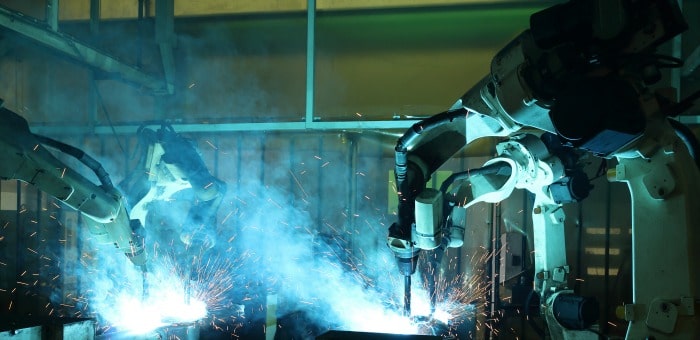Manufacturers are under pressure to squeeze greater productivity from their human workforces. Industrial robots can automate repetitive tasks, but that’s only part of the reason that robots are spreading like wildfire across the factory floor. Most discussions of this phenomenon center on whether robots will replace human workers. The choice is presented as “yes or no”, and this stifles deeper analysis. For smart manufacturers, learning to think about robots is as important a topic as whether robots are learning to think about us.
Five Trends, Five Senses
If there’s a right way to think about robots, it starts with understanding the present and making some reasonable predictions about the future. In Five Robot Trends to Watch for in 2016, MIT Technology Review cites China’s increasing demand for robots, advanced algorithms that are enabling robots to adapt, information sharing between robots, the introduction of “personal” robots as companions and caregivers, and the expanded use of unmanned aerial vehicles (UAVs) or drones. For manufacturers, some of these trends are clearly more important than others.
Today’s industrial robots are being designed with human-like capabilities that include sensing, dexterity, memory, and object recognition. This doesn’t mean that robots can “think”, unless you equate adapting to events with human learning. Still, robots are being used in more ways than ever before. Some of the jobs that today’s machines can perform include picking and packing, testing and inspection, and component assembly. Robots are used widely in the automotive sector, but smart manufacturers know that applications for robots aren’t limited by industry or even supply chain position.
Spreading Across the Supply Chain – and Beyond an Industry
In The New Hire: How a New Generation of Robots is Transforming Manufacturing, Price Waterhouse Cooper (PwC) and the Manufacturing Institute share some important statistics. In 2005, 69% of all North American orders for industrial robots were from automotive original equipment manufacturers (OEMs). By 2014, that percentage had fallen 13% to 56%. Did total demand for robots decline during this time period? Hardly. As the Industrial Federation of Robotics (IFR) explains on its website, sales of robots exploded.
Between 2005 and 2009, the IFR reports, the average annual number of robots sold was about 115,000 units. Then, between 2010 and 2014, that number rose to approximately 171,000 units. This 48% increase is significant, but the average annual sales increase is also notable at 17%. “The number of robot installations”, the IFR explains, “has never increased so heavily before”. The main drivers of growth weren’t the automotive OEMs, but their Tier 1 and Tier 2 parts suppliers along with the electrical and electronics industry. Additional growth drivers include medical device manufacturing and plastic parts production.
Cool Robots and SMART Goals
Manufacturers in other industries who want to invest in robots are in good company. According to the PwC and Manufacturing Institute survey of 120 firms, 59% of manufacturers are using some sort of robotics technology. Meanwhile, nearly 30% of survey respondents believe that the replacement of humans with robots represents “the biggest impact of robots on the US manufacturing workforce in the next 3 – 5 years.” Yet this is only part of a larger picture that’s beginning to emerge.
Typically, reports about robots focus our fears or pique our interest in what’s cool, such as this Best Robots of CES 2016 article with its focus on consumer electronics (CE) rather than return on investment (ROI). Yet there’s another acronym with which many manufacturers are familiar, and which also applies to decision-making involving robots. If investing in robots is part of your plans, are your goals Specific, Measurable, Achievable, Realistic, and Time-bound (SMART)? The trends in robotics all point to continued technological innovation and sales growth. How will you make the most of robots on your own factory floor?
Image credit: © sittinan – stock.adobe.com

